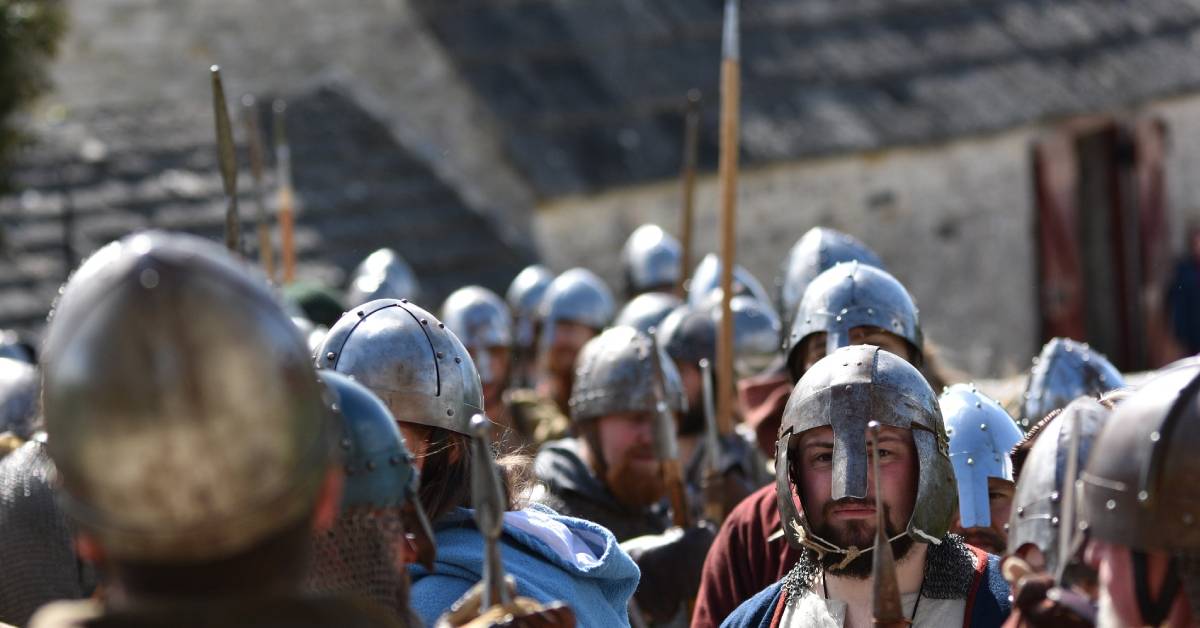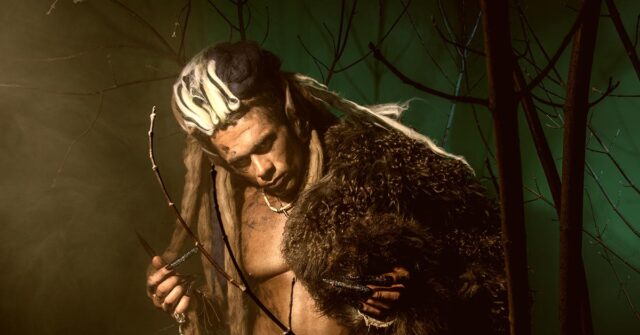The Viking era, marked by the seafaring warriors from Scandinavia, holds a significant place in the history of warfare. Among their various weapons, the Viking spear stands out for its ubiquitous use and symbolic importance.
This article explores the pivotal role of Viking spears in warfare, their construction, and their cultural significance.
Historical Background of Vikings
The Vikings originated from the Scandinavian countries of Norway, Denmark, and Sweden around the late 8th century. Known for their mastery of the sea and fierce combat abilities, they left a lasting legacy on the European continent.
Origins and Culture
The Vikings were not only warriors but also traders, explorers, and settlers. Their culture was deeply rooted in Norse mythology and revolved around honor, bravery, and prowess in battle.
Viking Warfare and Tactics
Vikings employed a variety of warfare tactics, often leveraging their superior naval capabilities for raids. Their weaponry was a crucial aspect of their battle strategy, and the spear played a central role.
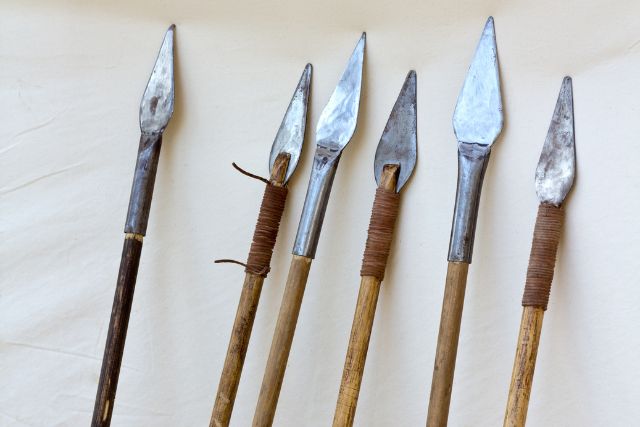

Viking Spears: An Overview
The spear was the primary weapon of a Viking warrior. It was versatile, easy to manufacture, and effective in various combat situations.
Design and Anatomy of Viking Spears
The design of a Viking spear typically consisted of a long wooden shaft with an iron spearhead. The spearhead was often leaf-shaped, enabling effective thrusting and slashing maneuvers.
Variations of Viking Spears
While the basic design remained consistent, there were variations in Viking spears. These depended on the specific purpose of the spear, the status of the warrior, and regional differences.
Materials and Manufacturing
The construction of Viking spears involved traditional blacksmithing techniques and materials readily available in the Scandinavian region.
Iron and Steel: Main Components of Viking Spears
Iron was the primary material used in the construction of Viking spearheads. The quality of iron varied, with the best quality steel often reserved for high-status individuals.
The Blacksmith’s Role in Spear Creation
Blacksmiths were highly respected in Viking society. They were responsible for forging weapons and were deeply involved in the spear-creation process.
Techniques of Viking Metalwork
Viking metalwork techniques were highly advanced for their time. Blacksmiths employed various methods to create durable and effective weapons.
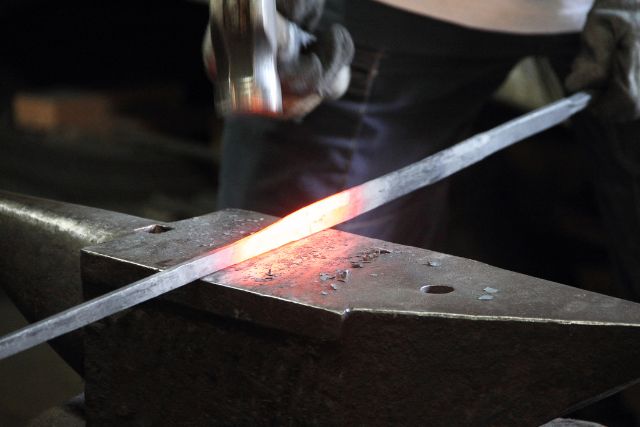

The Role of Spears in Viking Warfare
Spears were the most common weapon in Viking warfare due to their versatility, ease of use, and effectiveness in various combat situations.
Spear: A Weapon of Choice
Every Viking warrior, regardless of status, would typically carry a spear. The spear was a weapon of choice due to its reach and versatility in both offensive and defensive situations.
Spears in Offensive Tactics
During offensive maneuvers, Viking warriors used spears for thrusting at the enemy or throwing from a distance. In formation, spears allowed Vikings to maintain a defensive line while attacking.
Spears in Defensive Tactics
Defensively, the spear could keep an opponent at a distance or be used to deflect attacks. In shield-wall formations, spears were crucial for maintaining the integrity of the line and repelling enemy assaults.
Iconic Battles and Viking Spears
Viking spears played a key role in many significant battles and raids throughout the Viking age, demonstrating their importance in Viking warfare strategy.
Notable Viking Victories
One of the most significant Viking victories was the Battle of Maldon where spears played a crucial role. The Vikings used their spears effectively to break the English shield wall and achieve victory.
Role of Spears in Major Defeats
Even in defeats, the role of the spear is evident. In the Battle of Stamford Bridge, the Vikings, though ultimately defeated, used their spears to hold off the English army for a considerable time.
Viking Spears in Dueling and Personal Combat
Outside of large-scale battles, Viking spears also found use in duelling and personal combat, demonstrating their versatility.
Spear Fighting Techniques
Viking spear-fighting techniques were diverse, including thrusting, slashing, and throwing maneuvers. Mastery of these techniques was critical for a Viking warrior’s survival in combat.
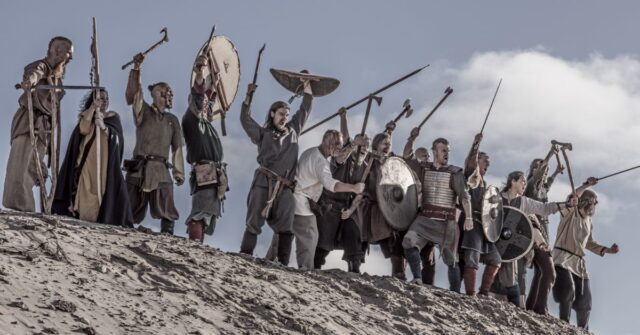

The Role of Spears in Viking Duels
Viking duels, known as Holmgang, were often fought using spears. These duels could be to settle disputes or demonstrate personal bravery and skill.
Symbolic and Cultural Significance of Viking Spears
Beyond their practical use in warfare, Viking spears also held deep symbolic and cultural significance in Viking society.
Spears in Norse Mythology
Spears feature prominently in Norse mythology. Most notably, Odin, the chief of the gods, wielded a spear named Gungnir that was said to never miss its target.
Spears as Symbols of Social Status
While all Viking warriors carried spears, the quality of a spear could be a symbol of social status. High-ranking warriors and chieftains often had elaborately decorated spears.
Funeral Rites and Spears
Spear was often included in Viking burial rites. It served as a grave good, accompanying the departed to the afterlife. This underlines the spear’s importance in Viking life and death.
Archaeological Discoveries and Viking Spears
Archaeological findings have provided us with tangible evidence of Viking spears and have deepened our understanding of their role in Viking warfare and society.
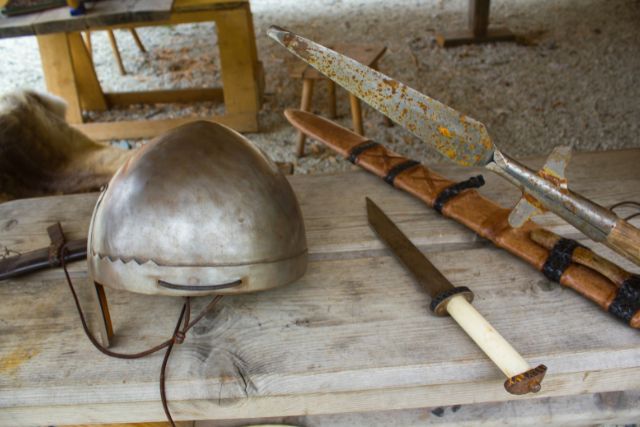

Significant Finds
Many Viking spearheads have been found across Europe, often in burial sites. These finds have helped to confirm historical and literary accounts of Viking spears.
What Artifacts Tell Us
These artifacts have provided insights into the design, manufacture, and use of Viking spears. They have also illuminated the spear’s symbolic importance in Viking culture.
Conclusion
Viking spears were more than just a weapon; they were an integral part of Viking warfare and society.
Their importance is demonstrated by their widespread use, their role in Viking tactics, and their symbolic significance in Viking culture and mythology.
The Viking spear, therefore, stands as a testament to the Vikings’ prowess in warfare and their rich cultural heritage.

